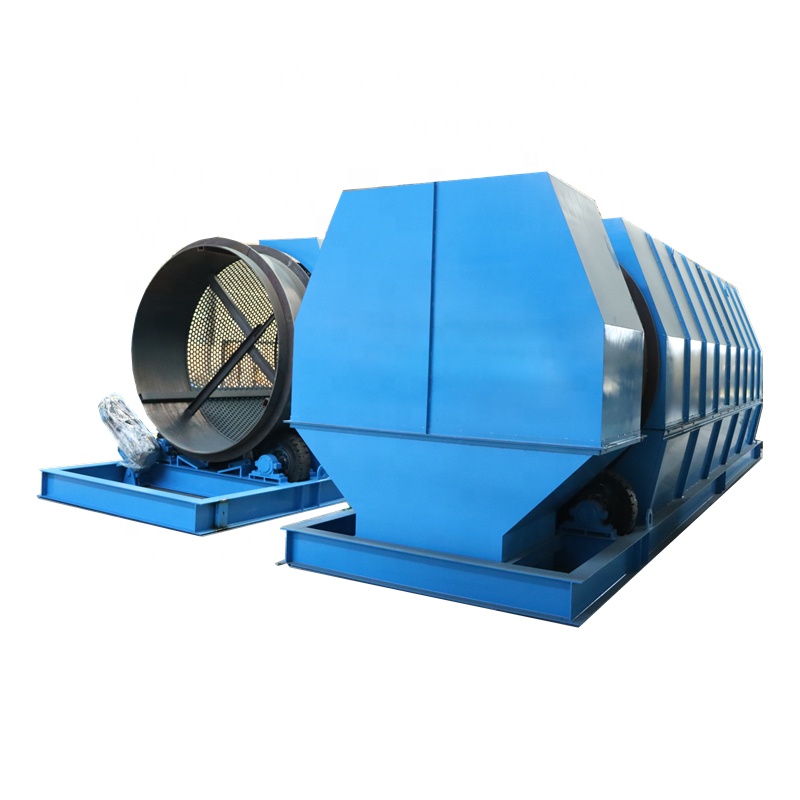Iron scrap recycling plants have become an integral part of sustainable industrial operations, transforming waste into valuable resources while addressing ecological concerns. Navigating the intricacies of setting up and running a successful iron scrap recycling facility involves a blend of practical experience, advanced technical knowledge, and an unwavering commitment to quality and compliance. Drawing from a wealth of industry expertise, this article delves into the core aspects of building and optimizing an iron scrap recycling plant that stands out in its efficiency, environmental stewardship, and economic viability.

Building a robust iron scrap recycling plant begins with choosing the right location, accounting for factors such as proximity to scrap suppliers, transportation hubs, and target markets. The significance of logistics cannot be overstated, as efficient transport networks minimize costs and reduce environmental impact. Furthermore, securing the necessary permits and ensuring compliance with local regulations is a critical step, safeguarding the plant's operations against potential legal challenges.
Advanced technologies play a pivotal role in modern iron scrap recycling facilities, optimizing the separation and processing of materials for maximum yield and purity. Equipment such as shredders, magnetic separators, and eddy current systems are essential, each serving distinct functions in isolating iron from mixed scrap loads. The incorporation of smart technology and automation enhances efficiency, allowing real-time monitoring and control over operations, thereby minimizing downtime and enhancing throughput.

A key component of expertise in this industry lies in a profound understanding of material sciences. Knowing the different types of scrap iron and how they respond to various processing techniques can significantly influence the quality of the recycled product. Regular training for staff and continuous professional development are crucial, ensuring that teams remain proficient in the latest recycling techniques and safety protocols.
Establishing a reputation for authoritativeness in the iron scrap recycling sector requires a commitment to both environmental and social responsibility. Implementing cutting-edge environmental management systems enables facilities to reduce emissions, control noise pollution, and responsibly manage waste by-products. In parallel, developing strong relationships with local communities and stakeholders fosters trust and supports sustainable business practices.
iron scrap recycling plant
Trustworthiness is enhanced through transparent reporting and compliance with international standards such as ISO 9001 for quality management and ISO 14001 for environmental management. These certifications not only validate the reliability of a recycling plant’s processes but also signal to clients and partners that the facility is operated to the highest industry standards.
Economic stewardship in an iron scrap recycling plant involves strategic investments in technology and process optimization to improve profitability. Leveraging economies of scale and exploring opportunities in secondary markets, such as selling high-grade ferrous alloys, can generate additional revenue streams. Financial foresight is also necessary to navigate fluctuations in the global commodities market, turning price volatility into an advantage through agile business strategies.
Customer relationships are central to sustained growth, requiring direct engagement with buyers to understand their evolving needs and expectations. By tailoring recycled iron products to meet specific industry demands, recycling plants can establish themselves as preferred suppliers, offering superior quality and service.
The success of an iron scrap recycling plant is ultimately measured by its ability to create value while minimizing environmental impact. As the global focus shifts increasingly towards circular economies, the role of recycling facilities will expand, necessitating continuous innovation and expertise. By adhering to the principles of experience, expertise, authoritativeness, and trustworthiness, iron scrap recycling plants can effectively contribute to a sustainable future, laying the groundwork for the next generation of industrial practices.
In conclusion, the path to building a prominent iron scrap recycling plant is defined by meticulous planning, cutting-edge technology, and an enduring commitment to environmental and operational excellence. With the fusion of practical experience and a deep understanding of the market dynamics, these facilities can play a pivotal role in transforming industrial waste management and championing sustainability at the core of modern manufacturing.


